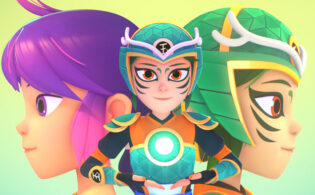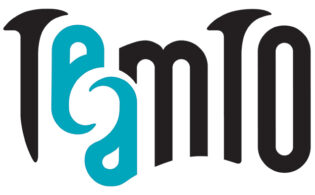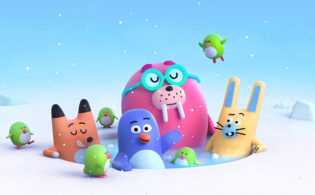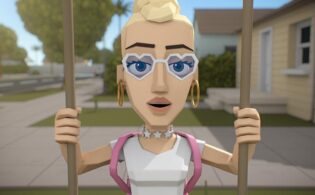Corinne Kouper, TeamTO co-founder and senior VP of development and production, talks to TV Kids about the series We Are Family and Mighty Mike and the mindset that drives the studio’s projects.
At age 22, Rick Rubin launched the Def Jam label from his New York University dorm room, becoming a key figure in the world of hip hop, rap and urban music. A decade later he invited rappers Run DMC and rock legends Aerosmith into the recording studio to collaborate on the rock classic “Walk This Way.” It became a historic hit and rap-rock was born. We Are Family, a history of pop anthology series from the France-based CG-animation company TeamTO, explores how partnerships between iconic groups like the two aforementioned have come together to create new music genres.
TeamTO presented the show for the first time at last year’s Cartoon Forum ahead of the slated premiere of the series’ first full episode at Kidscreen next month. We Are Family “is a very different new genre in terms of kids’ programming because it’s also going to be for teens and family,” Corinne Kouper, TeamTO co-founder and senior VP of development and production, tells TV Kids. “That’s a bit wider and different audience. The range of partners is probably going to be a bit different than the ones we’re used to working with so far. We’re always looking for new challenges, and that is going to be another challenge.”
Another new show on TeamTO’s slate is Mighty Mike, which was released on France 3 and in Germany on Super RTL last September following its rollout in a number of other territories, including Canada and the U.S., where it airs on Family Channel and Universal Kids respectively. (TeamTO recently closed a licensing agency agreement with France Télévisions Distribution for the property.) In the family-viewing series, aimed at kids ages 6 to 10, the titular pug possesses a refined manner and sophisticated tastes. Instead of the quiet life he longs for, however, Mike is forced to defend his house from a bunch of furry intruders—raccoons, turtles and Fluffy the Cat.
“It’s really quite unusual and quite outstanding to be able to produce that type of feature quality for fur and animal images for a TV show on a TV-show budget and production process,” says Kouper, who adds that scheduling “is very demanding because the output in TV is much higher than on a feature, where you have much more time to work on all of the images.”
The number of shows that TeamTO is working on at any given time is dependent on how quickly a show is picked up by broadcasters and how things work out with the creative team—from the writers and directors to the graphic/visual artists. Of the shows that the studio is currently working on, “all are at different levels in terms of development,” according to Kouper. “Some are at very early stages and some are about to be greenlit. Plus, we also do a lot of work for third-party producers, so our studio is actively working on other shows like PJ Masks and Ricky Zoom. We do Skylander Academy. We do a lot of shows.”
At TeamTO, the creative ethos, for whatever project is at hand, hinges on passion. “We always say that we want to produce shows with a purpose and try to bring heart to the characters, and I think that it’s the most important thing for us,” says Kouper. “And not just in the characters but also in the way it’s portrayed on screen. That’s the challenge because you have to use technologies to produce images that convey an image that is going to be relatable to kids.”
It’s also important for the studio that it is always reinventing itself, with no show looking like the previous one that came out of it. In terms of technology, as a CG studio, TeamTO is actively involved in developing new CG tools and innovative and improved ways of producing. But at TeamTO, CG is not considered a style—it’s a technique. And that technique “is at the service of creativity,” says Kouper. “It works that way. We are never contrived by the needs of technology. We set out on a course with an artistic vision and then we find ways of making the show we want using the technology—but it doesn’t go the other way around.”
“It’s not always so easy to make everything coincide,” adds Kouper. “It’s like a real puzzle to make sure everything comes into place rightly and at the right time. “
 TVKIDS
TVKIDS






